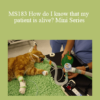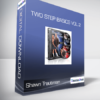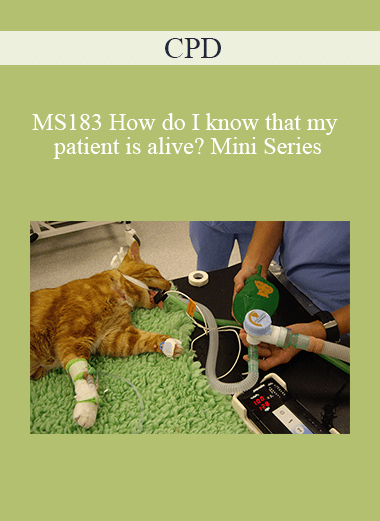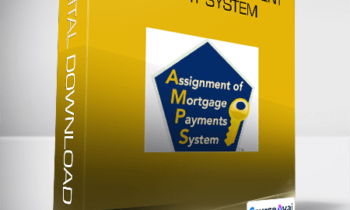$479.00 Original price was: $479.00.$114.00Current price is: $114.00.
 Purchase this course you will earn 114 Points worth of $11.40
Purchase this course you will earn 114 Points worth of $11.40Elevate your skills with the CPD – MS183 How do I know that my patient is alive? Mini Series course, available for just $479.00 Original price was: $479.00.$114.00Current price is: $114.00. on Utralist.com! Browse our curated selection of over 60,000 downloadable digital courses across diverse Everything Else. Benefit from expert-led, self-paced instruction and save over 80%. Start learning smarter today!
Purchase CPD – MS183 How do I know that my patient is alive? Mini Series courses at here with PRICE $479 $114
MS183 How do I know that my patient is alive? Mini Series
£347.00 (+VAT)
12 months access to recordings and course materials is included. Please note that these are webinar recordings and not live events. Full details on how to access the Mini Series will be emailed to you.
- Join Adam Auckburally BVSc CertVA DipECVAA MRCVS for three 2-hour online sessions
- Comprehensive notes to downloaded
- Self-assessment quizzes to ‘release’ your 8 hours CPD certification (don’t worry, you can take them more than once if you don’t quite hit the mark first time)
- A whole year’s access to recorded sessions for reviewing key points
- Superb value for money – learn without travelling
- Watch the recordings on your iPad!
- This Mini Series was originally broadcast in August 2018!
Programme
Session 1
Pulse Oximetry
What does that number actually mean? Despite many practices owning a pulse oximeter, it is often never used, or when it is used there is confusion when interpreting the number displayed. In most instances turning up the oxygen flow is not the answer. Covered in this session will be:
-
- An introduction to the basic science of oxygen carriage and delivery
- How to interpret the number displayed on the monitor
- Diagnosis of the causes of hypoxaemia and how to deal with them
- Case scenarios
Session 2Capnography
Now it’s time to drag that monitor out from under the anaesthetic machine! This is another piece of equipment that is rarely used in practice – for many the cost of equipment such as this precludes its use and it may only be used in ‘high risk’ cases. In this session you will learn about:
- Why capnography is THE most useful piece of monitoring equipment
- The basic science of carbon dioxide production and elimination
- Shapes and waveforms – how to interpret them
- ETCO2 and how to interpret the number
- Diagnosis of hypocapnia and hypercapnia and how to deal with them
Session 3Blood Pressure and Basic electrocardiography for the anaesthetist
Many practices own a Doppler machine, but fewer will have oscillometric devices for measurement of blood pressure. Additionally, real-time ECG analysis in the anaesthetised patient is very rarely carried out, and if it is, is often a source of panic when things go awry. Discussed in this final session will be:
- An introduction to the physiology of blood pressure
- How to measure blood pressure non-invasively and get reliable results
- A short introduction to invasive blood pressure measurements
- How to interpret some of the real-time ECG patterns commonly observed in animals under anaesthesia
- How not to panic!
- When and how to deal with common ECG abnormalities
- Recognition of cardiac arrest – what is an ‘arrest pattern’
Purchase CPD – MS183 How do I know that my patient is alive? Mini Series courses at here with PRICE $479 $114
Cultivate continuous growth with the CPD – MS183 How do I know that my patient is alive? Mini Series course at Utralist.com! Unlock lifetime access to premium digital content, meticulously designed for both career advancement and personal enrichment.
- Lifetime Access: Enjoy limitless access to your purchased courses.
- Exceptional Value: Benefit from savings up to 80% on high-quality courses.
- Secure Transactions: Your payments are always safe and protected.
- Practical Application: Gain real-world skills applicable to your goals.
- Instant Accessibility: Begin your learning journey immediately after buying.
- Device Compatible: Access your courses seamlessly on any device.
Transform your potential with Utralist.com!
Related products
Everything Else
= 43 Points
Everything Else
= 81 Points
Everything Else
= 38 Points
Everything Else
= 38 Points
Everything Else
= 37 Points
Everything Else
= 47 Points
Everything Else
= 137 Points
Everything Else
= 43 Points
Login

 Purchase this course you will earn 114 Points worth of $11.40
Purchase this course you will earn 114 Points worth of $11.40










